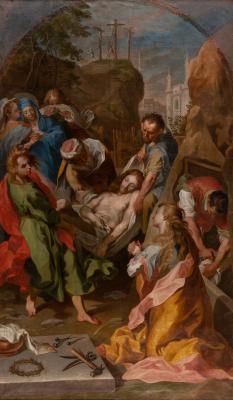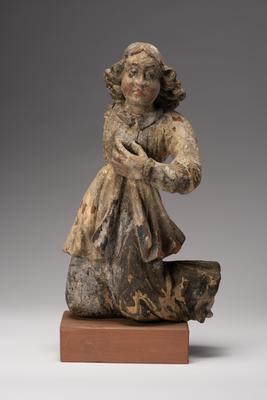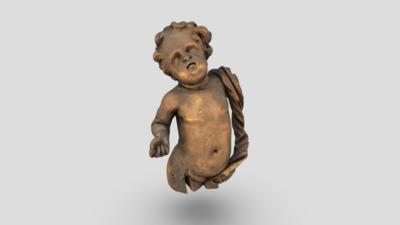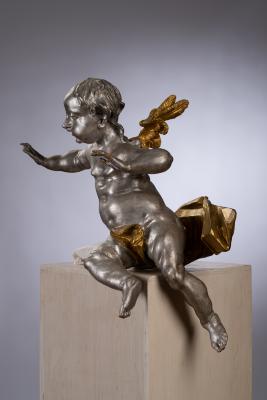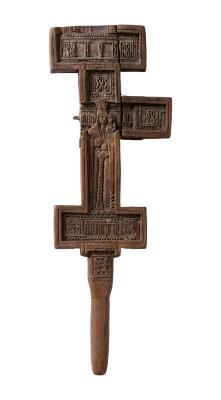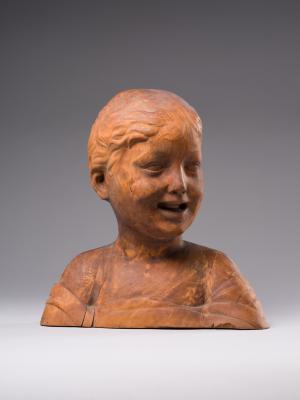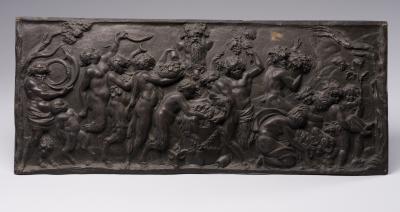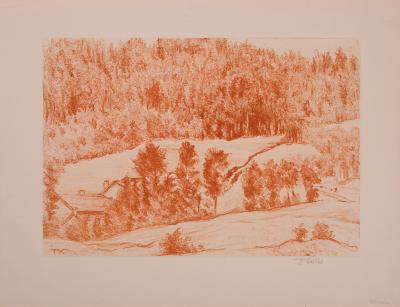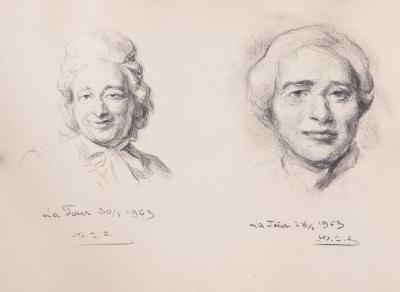PF 1982 (New Year Greeting Cards)
Alexander Aksinin
- ID
- Г-IV-4577
- Author
- Alexander Aksinin
- Name
- PF 1982 (New Year Greeting Cards)
- Date of creation
- 1981
- Technique
- etching
- Material
- imprint on paper
- Dimensions (height x width, cm)
- 13.5 x 8.5
- Type
- printmaking
- Provenance
- Courtesy of V. Onusaitis, 1987
The abbreviation PF (French: pour fèliciter – for congratulations) is one of 18 etchings from a New Year Greeting Cards series. The artist had given them to his friends and acquaintances since 1974. There are five versions of this work. The composition is arranged in a regular rhombus in the first two variants. The next three have truncated sides, resulting in irregular hexagon imprints. The author did it so the greeting card could be placed in an envelope. In the last works, including the one kept in Borys Voznytskyi Lviv National Art Gallery, the entire field of the etching, as well as the background in the centre of the composition, is darkened.
On a dark background, one can see a complex composition. Its lower part is formed by a slingshot with a pointed end at the bottom, which can be interpreted as a sharpened pencil and a thermometer reservoir. The needles are inserted into the ends of the lateral diagonal slopes, which make them look like medical syringes. Between the slopes, in a triangular hollow that is partially filled with bubbly liquid, there is a schematically depicted female figure. She pushes her legs through the bubbles of New Year champagne spraying over her. A bowl with two sticks is between the woman's breasts, whereas a similar bowl with a Christmas tree is placed on her noseless head. The bowl is repeated in the upper part of the composition, although it is depicted in a larger format. The upper bowl, reminiscent of a boat with oars and a giant eyeball in the centre, dominates the work. Two winged snakes tied with their tails to the slingshot's slopes support the boat-bowl from the sides. The plane of the boat and the eye around the pupil are decorated with balls-circles, which look like bubbles between the slopes of the slingshot. Similar bubbles go upwards from the eyelashes and decorate the snakes' wings.
The date of the work, 1982, is depicted unusually. The numbers are written vertically from the bottom up: 1 and 9 are located in the centre of the slingshot, 8 is on the plane of the boat with an eye, and 2 is placed in the dark background above the eyelashes.
On the left slope of the slingshot, we can see the abbreviation P.F. (Pour fèliciter) and three discs pierced with a straight line. A.AKSININ and a small horseshoe are presented on its right side. The artist's monogram, with the numbers 19 and 81 on both sides, is located at the intersection of the slingshot's vertical and diagonal lines.
Depicting a slingshot in this work of art, the author presents the "bifurcation" as a transition from the previous year of 1981 to the new one of 1982. A similar meaning concerns the number "one" on the handle, which splits into "two" at the top. The scale division represents a calendar that resembles a thermometer's capillary. This implies the sign of the year's ending. In the etching, Alexander Aksinin used his cross-cutting symbols, mainly a boat, an eye, and syringes. They are often repeated in the etchings and non-replicated graphic works of those years (the artist's wife was seriously ill then).





